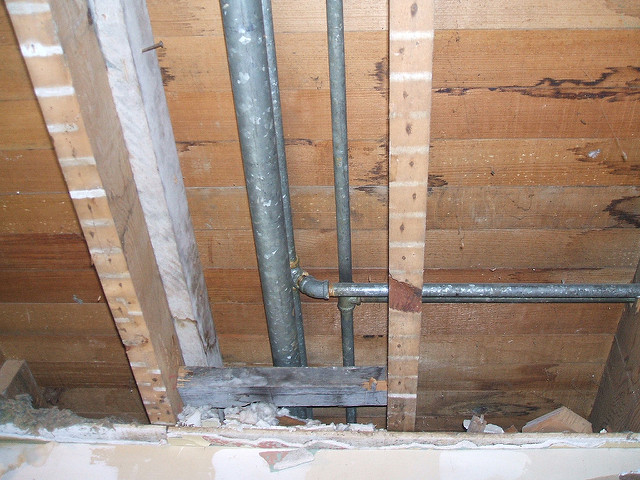6 Ways to Locate Concealed Water Leaks in Your Home
6 Ways to Locate Concealed Water Leaks in Your Home
Blog Article
Just about everyone seems to have his or her own notions on the subject of Detecting hidden plumbing leaks.

The minute you discover a leakage, calling your plumber for repairs is the very best solution. Nonetheless, some small water leaks might not be visible. Here are some hacks that help if you can not detect it with your nude eyes.
Early discovery of dripping water lines can reduce a potential disaster. Aside from saving you money, it will lessen the irritation and disappointment.
Inspect Water Consumption
If you find unexpected modifications, regardless of your consumption being the very same, it suggests that you have leakages in your plumbing system. An unexpected spike in your costs shows a fast-moving leak.
Meanwhile, a consistent rise on a monthly basis, despite having the same routines, shows you have a sluggish leak that's additionally slowly escalating. Call a plumber to completely examine your property, especially if you really feel a warm location on your floor with piping underneath.
Inspect and also Examine the Circumstance
Property owners must make it a practice to check under the sink counters and also also inside closets for any kind of bad odor or mold development. These 2 red flags suggest a leakage so prompt attention is called for. Doing routine inspections, also bi-annually, can save you from a significant trouble.
Examine the Water Meter
Checking it is a surefire method that helps you discover leakages. If it moves, that indicates a fast-moving leak. This implies you might have a sluggish leakage that can even be below ground.
Asses Exterior Lines
Do not neglect to examine your outdoor water lines too. Test spigots by affixing a garden hose pipe. Ought to water leak out of the link, you have a loose rubber gasket. Replace this as well as make sure all connections are limited. If you have actually got a lawn sprinkler, it will certainly assist get it skillfully took a look at and also preserved yearly. One little leakage can throw away lots of water and increase your water expense.
Do a Food Coloring Test
30% comes from commodes when it comes to water intake. Test to see if they are running effectively. Decrease flecks of food shade in the tank and wait 10 minutes. There's a leakage between the tank as well as bowl if the color in some way infiltrates your bowl during that time without flushing.
Inspect for stainings and also compromising as a lot of pipes and home appliances have a life expectancy. If you believe dripping water lines in your plumbing system, don't wait for it to intensify.
The moment you discover a leakage, calling your plumber for repair work is the finest service. Some tiny water leaks might not be noticeable. Examining it is a guaranteed means that assists you discover leaks. One small leakage can waste loads of water and also increase your water expense.
If you think leaking water lines in your plumbing system, do not wait for it to rise.
WARNING SIGNS OF WATER LEAKAGE BEHIND THE WALL
PERSISTENT MUSTY ODORS
As water slowly drips from a leaky pipe inside the wall, flooring and sheetrock stay damp and develop an odor similar to wet cardboard. It generates a musty smell that can help you find hidden leaks.
MOLD IN UNUSUAL AREAS
Mold usually grows in wet areas like kitchens, baths and laundry rooms. If you spot the stuff on walls or baseboards in other rooms of the house, it’s a good indicator of undetected water leaks.
STAINS THAT GROW
When mold thrives around a leaky pipe, it sometimes takes hold on the inside surface of the affected wall. A growing stain on otherwise clean sheetrock is often your sign of a hidden plumbing problem.
PEELING OR BUBBLING WALLPAPER / PAINT
This clue is easy to miss in rooms that don’t get much use. When you see wallpaper separating along seams or paint bubbling or flaking off the wall, blame sheetrock that stays wet because of an undetected leak.
BUCKLED CEILINGS AND STAINED FLOORS
If ceilings or floors in bathrooms, kitchens or laundry areas develop structural problems, don’t rule out constant damp inside the walls. Wet sheetrock can affect adjacent framing, flooring and ceilings.
https://www.servicemasterbyzaba.com/blog/how-to-detect-water-leakage-in-walls/

As a person who reads on Leaking water lines, I thought sharing that post was worthwhile. So long as you appreciated our blog entry if you please make sure you remember to share it. I value reading our article about Top leak detection hacks.
Report this page